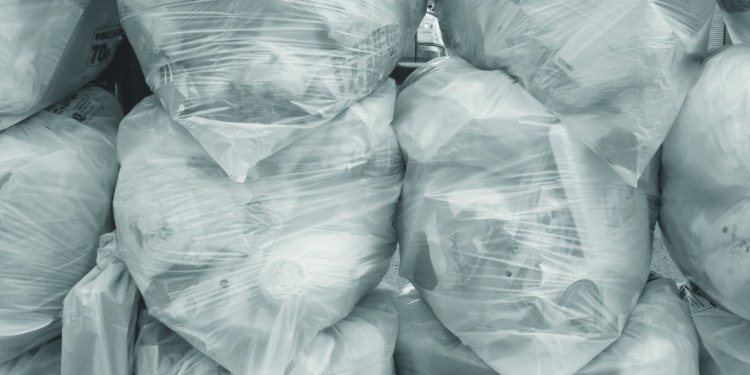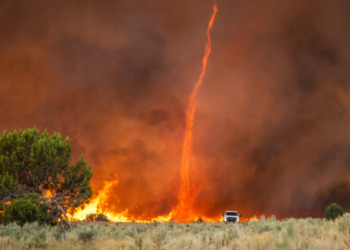Although Scotland’s capital city was tidied in time to host funerary ceremonies for the late Queen, the impact of the 12-day bin strike on the city’s residents has not faded entirely from view. The strike not only upset the daily lives of Edinburgh’s inhabitants, it brought into sharp relief a fundamental problem that is likely to become more relevant as climate change accelerates and pollution increases around the world.
Given that the responsible disposal of our waste has become critically important to the health of the environment, traditionally low-paid bin workers in every town and city have taken on an unexpected role as safeguards of our planet. The fight of these workers in Scotland to be paid accordingly will hopefully help to bridge the widening gap between workers’ rights and defense of the environment, both of which are a matter of concern to us all.
Now that summer has wound down, tourists who have come to Edinburgh in the last few months will filter out, and like an annual ritual, residents will welcome the return of peace and quiet to their city streets. Due to the return of the first full-sized Edinburgh International Festival since 2019 and the unexpected presence of the late Queen Elizabeth II, Edinburgh has been the focus of heightened international visibility over the last few weeks.
Punctuating these events, the tide of industrial action which has swept over the United Kingdom this summer was also making its presence known in the city. On August 18, bin workers in the capital city began a twelve-day strike to protest low wages.
Residents, who generally empathised with the need for a pay rise in the face of the ongoing cost of living crisis, were mostly supportive of this drastic measure, turning instead to cast blame for the situation onto government leaders who seemed either slow or unwilling to alleviate the concerns of the workers’ unions.
Our Edinburgh streets after 2.5 days of the bin strike… 7 more days to go (during the world's biggest arts festival), what will it look like then? It's an environmental nightmare! Just pay the bin men a fair wage @Edinburgh_CC and get it sorted. #binstrike pic.twitter.com/O6G31gHeCq
— Abigail Kleboe (@AbiKleboewriter) August 20, 2022
However, empathy for the plight of these essential workers did not diminish the growing horror the city witnessed as mountains of rubbish began to pile up.
Two spots on Great Junction Street in Leith on Sunday 28th Aug. #binstrike #Edinburghbinstrike #Edinburgh pic.twitter.com/OMdNLhFZmm
— Edinburgh Litter Picks (@EdinLitterPicks) August 29, 2022
The impact of tourism on industrial action: It helped bring attention to the issue
The fact that this industrial action took place during the second half of the Fringe Festival, Edinburgh’s peak tourist season, compounded the effect of the strike.
The festival itself added to the problem, since the presence of hundreds of thousands of tourists increased the sheer volume of the city’s uncollected rubbish. Additionally, the majority of tourists come to the city in August for the festival alone, and this time it brought heightened media attention to the crisis.
This in turn allowed the strike to gain wider recognition outside of Scotland. For example, comedians who came to perform this year posted photos on social media with overflowing bins.
City chic @edfringe #binstrike a vogue moment. Come and see @MenopauseParty @SpaceArtsCentre #venue45 #EdFringe2022 pic.twitter.com/cHnjJfyhHP
— Dolly Slatemen (@DollySlatemen) August 24, 2022
For some people, the concerns were chiefly aesthetic. Many residents reported a sense of embarrassment that this picturesque city, a UNESCO world heritage site, was being shown to the world whilst inundated with litter.
However, the strike also sparked serious concerns about the possible health hazard posed by the mounting trash, with Public Health Scotland publishing a statement on August 26 about how to mitigate the risk of disease. Others worried about the increase in pests that the abundant food sources could cause.
The environmental cost of industrial action: Is it worth it?
One topic that public discourse has tiptoed around was the toll that this strike would take on the environment. How much of the unmanaged waste would make it into local waterways and other food chains before the city was cleaned up?
Pollution always poses a dire threat to wildlife, and although residents were generally supportive, the strikes caused conflicting emotions in some who supported the bin workers but thought the cost to the environment was too high.
Some residents debated whether it would be more effective to comply with the city council’s request to keep household waste inside, in an effort to mitigate the threat to the environment, or to continue taking out their rubbish, in order to highlight the necessity of the bin workers and resist any effort to downplay the effects of the strike.
Related Article: Integrating Circularity Into Plastic Waste Management – a Win-Win? | CuanTec: Biotech Company Fighting Against Waste and for the Environment
However, others reasoned that the protest itself would benefit the cause of environmentalism, by forcing an apathetic public audience to confront the sheer volume of rubbish created by a single city in twelve days.
It was also illuminating to see what the majority of the litter blowing across the streets consisted of.
Unsurprisingly, single-use plastics and other packaging made up a large portion of the loose litter. One would hope that this ordeal has opened eyes to the true cost that some of these conveniences bear to society. Perhaps the sight of so many chain coffee cups in the gutters will have reminded a few more people to bring their reusable ones with them, but will a few people changing their habits truly offset the damage that was inflicted?
The bin strike aftermath: Where to go from here
The bin workers made their point effectively, since a settlement was reached that allowed another series of strikes, originally planned for the second week of September, to be avoided. However, the final state of the city on August 30 fell just short of disaster, with volunteers from the Rapid Relief Team, a charity that usually supports disaster relief operations, contributing to the clean-up efforts.
Even now, a month after the end of the industrial action, the clean-up is ongoing. As of Sepember 28, residents were continuing to reach out to the council on Twitter to notify staff about bins that were yet to be emptied.
But there's still no room for our recycling on Lower Granton Road. Reported it twice since the 21st. Nothing has been touched since the bin strikes. #Wearefuckingfucked pic.twitter.com/NZhmihuIA3
— James (@JamesHilton1992) September 28, 2022
The unease that surfaced during the strike has not entirely dissipated from the region either, with twenty other local authorities experiencing industrial action in the refuse sector in the past month.
Conversely, residents have also highlighted how efficiently the city centre was cleaned up when it became known that Operation Unicorn, the protocol enacted on the occasion of the reigning monarch dying in Scotland, was underway.
Unfortunately, this quick tidying of the city in time for an unexpected second onslaught of tourists has helped to push the memory of the bin meltdown aside and off the stage of public discussion.
Although these piles of rubbish have been swept out of city centres, they have not disappeared, and eventually society will have to face the consequences of its wasteful habits.
Edinburgh has had a lot to occupy its collective consciousness recently, after a quick transition from celebrating the Fringe’s return to solemnly bidding farewell to its longest reigning monarch. Let’s hope that these milestones will not continue to overshadow the less glamorous but equally pressing facts of life, like what to do with all of our rubbish and how to keep it from damaging our ecosystem.
The health of the planet is at stake, and we need to place industrial action in its full context. Justice for workers and justice for the environment are both issues that affect us all, workers and consumers alike.
Editor’s Note: The opinions expressed here by the authors are their own, not those of Impakter.com — In the Featured Photo: Pile of trash. Featured Photo Credit: Possessed Photography.










